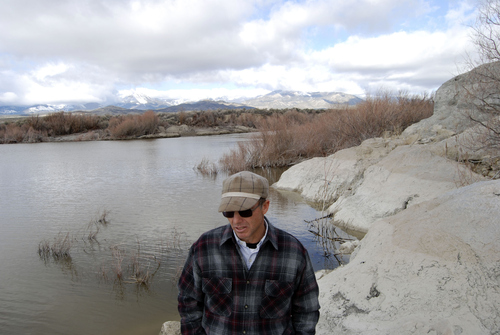This is an archived article that was published on sltrib.com in 2014, and information in the article may be outdated. It is provided only for personal research purposes and may not be reprinted.
"This is a hell of a way to run a desert."
— Utah Gov. Scott Matheson, 1983
When Matheson uttered that exasperated witticism, he was referring to one of the few times in recorded history when Utah was suffering from the effects of too much water.
Way too much.
It was a rare season of torrential rains and floods that triggered landslides and turned State Street into a river.
These days, and for the foreseeable future, Utah and the West are back to their normal hydrological status: a great big desert, with extra-dry conditions forecast as far as the scientifically enhanced eye can see.
Which is why policy makers in Utah and Nevada should pay heed to a new report from the U.S. Geological Survey, and to a pending report from the Utah Geological Survey, both pointing to the same conclusion.
And that finding is that the water in the border-straddling Snake Valley is both quite sparse and very old, and that any effort to pipe away any significant amount of that water — which the water utility that serves the city of Las Vegas keeps trying to do — will devastate the already fragile ecological and economic situation found there.
Not that it should have taken a faculty full of Ph.D.s to figure that one out.
The finding that took a bit more smarts is in the state's upcoming report, which says that the water now drawn from the valley probably fell as rain or snow many, perhaps tens of thousands, years ago. It is "fossil water." Like "fossil fuels." And it would take tens of thousands more years to recharge the aquifer were it to be depleted, by nature or by man.
The Southern Nevada Water Authority has a plan, already approved by officials in that state, to pipe away millions of gallons of water to slake the fountains and golf courses of Sin City. It would involve building a 285-mile pipeline costing upwards of $15 billion.
The plan has always been sold on the absurd notion that Nevada's straw would only take the bottom part of Utah's water. As if the top part wouldn't then fall to levels far too low to be of any use to humans, plants or animals.
Area landowners, including The Church of Jesus Christ of Latter-day Saints, and Gov. Gary Herbert have rightly opposed those plans. They should continue to do so, in whatever legal or political forums are open to them.
Sorry, Las Vegas, but the water that lies in Snake Valley should stay in Snake Valley.



